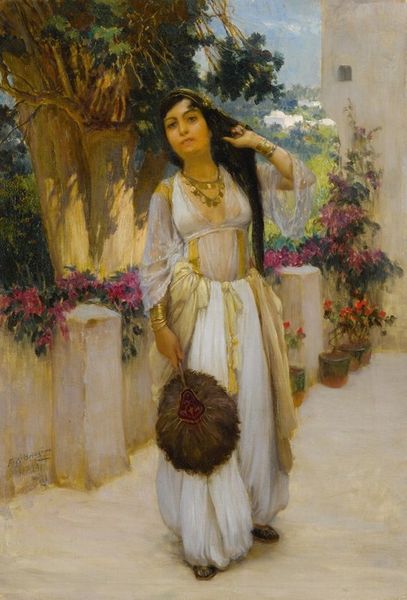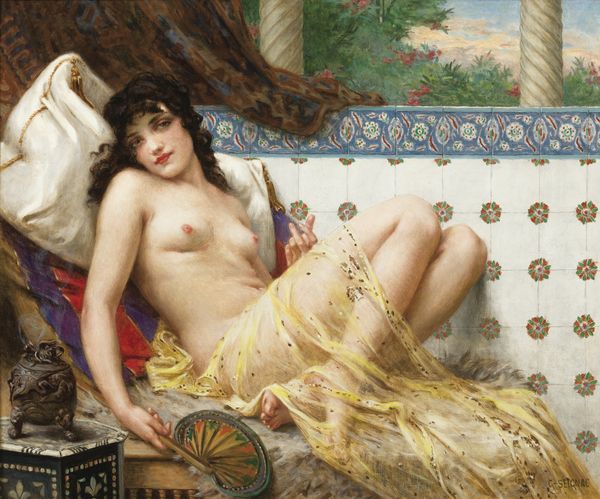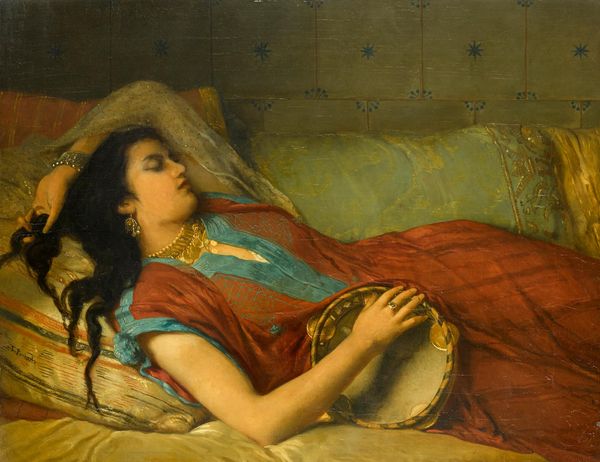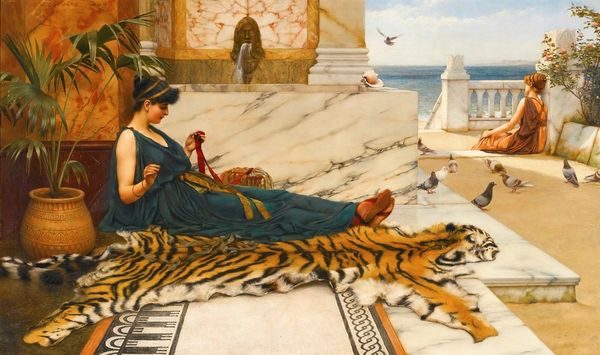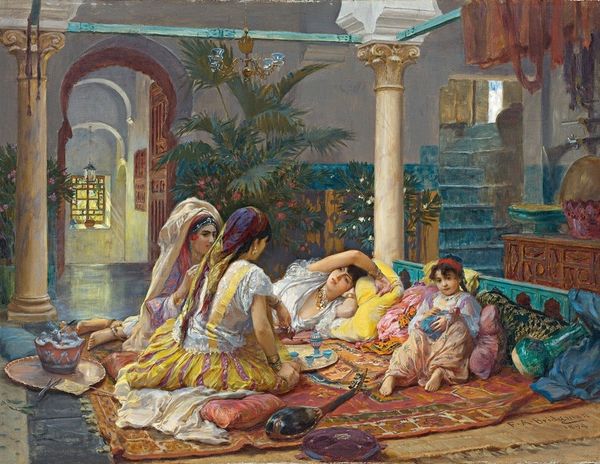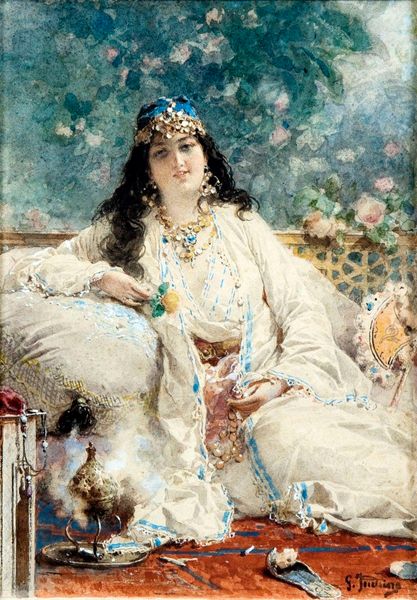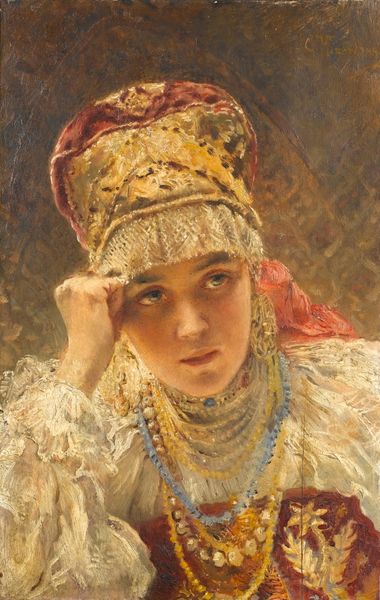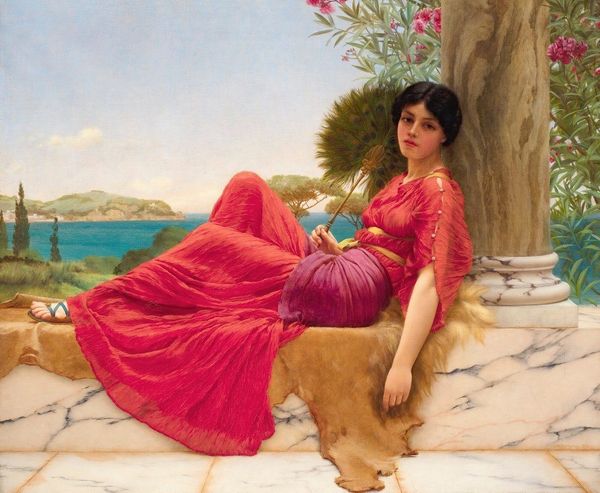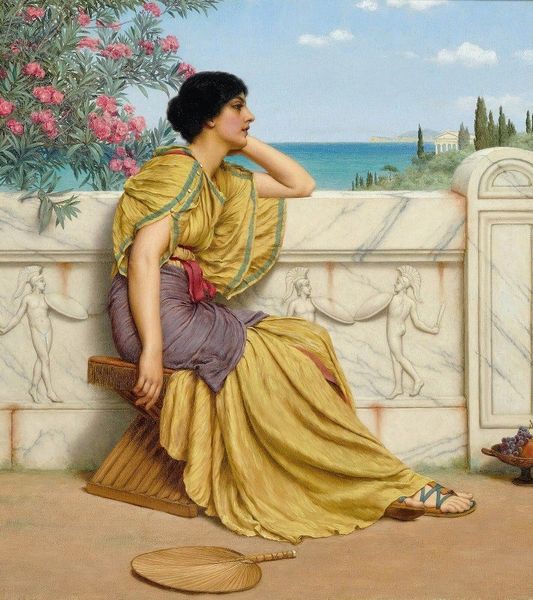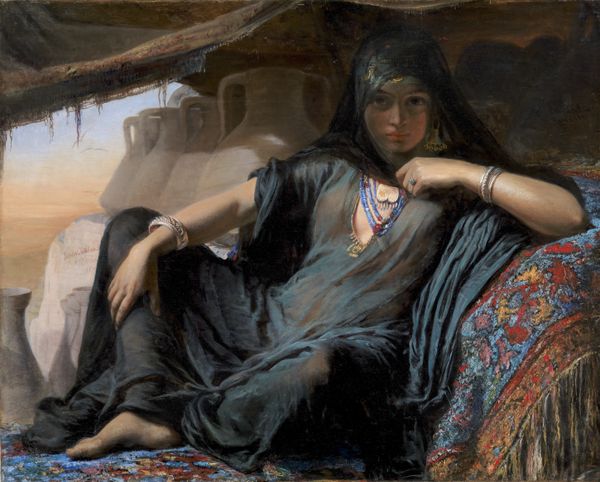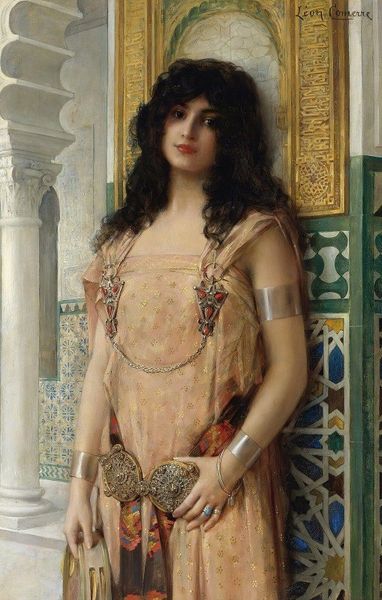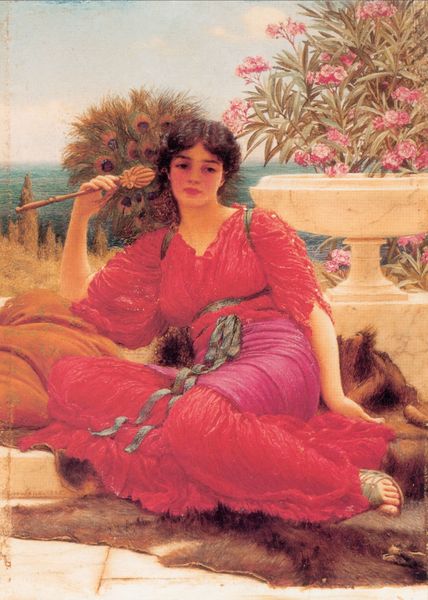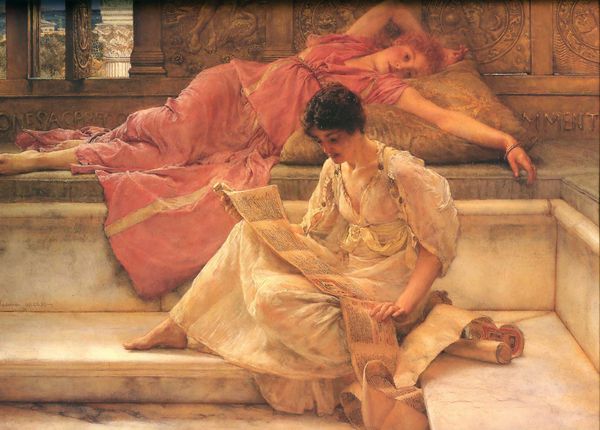
painting, oil-paint
#
portrait
#
figurative
#
painting
#
oil-paint
#
landscape
#
figuration
#
oil painting
#
orientalism
#
academic-art
#
portrait art
Copyright: Public Domain: Artvee
Curator: Frederick Arthur Bridgman, an American artist known for his Orientalist works, painted this piece, titled "Young Woman On A Terrace." The exact date is unknown. Editor: It’s immediately striking how this image centers on an apparent state of languor and daydream. There’s this aura of exoticism mixed with almost unbearable idleness, down to the drowsy gazelle at her feet. Curator: Bridgman indeed adopted the aesthetics of Orientalism, very popular at the time, to explore North African and Middle Eastern themes. You can see it in the architectural details of the terrace and the woman's garments and accessories. Editor: But who is this woman and what is her story? The way she’s adorned, her dress, even the instrument… it seems more of a constructed image for Western consumption than any reflection of genuine experience. Curator: Precisely. These paintings were often driven by Western fantasies about the "Orient," reflecting power dynamics and exoticizing people and cultures. Academic art frequently depicted romanticized visions of other places and their inhabitants for audiences back home. Editor: It raises questions about representation, power, and cultural appropriation. This artwork’s success, viewed in its contemporary moment, hinged on feeding desires for otherness. Is that a celebration of diversity, or something more complicated? Curator: Certainly more complicated. We have to consider the historical context, where Europe's colonial enterprises had a great effect on artistic trends. Museums and galleries often played a significant role in shaping narratives, selectively displaying and interpreting works like this. Editor: So, by unpacking this piece, we start to engage not only with aesthetics but also with colonial legacies. What do we take away today from the beautiful surface versus the troubling depths? Curator: Indeed, reflecting on these problematic undercurrents becomes part of our modern dialogue with art of this era. Editor: Absolutely. Hopefully these observations give our audience a fuller understanding.
Comments
No comments
Be the first to comment and join the conversation on the ultimate creative platform.
